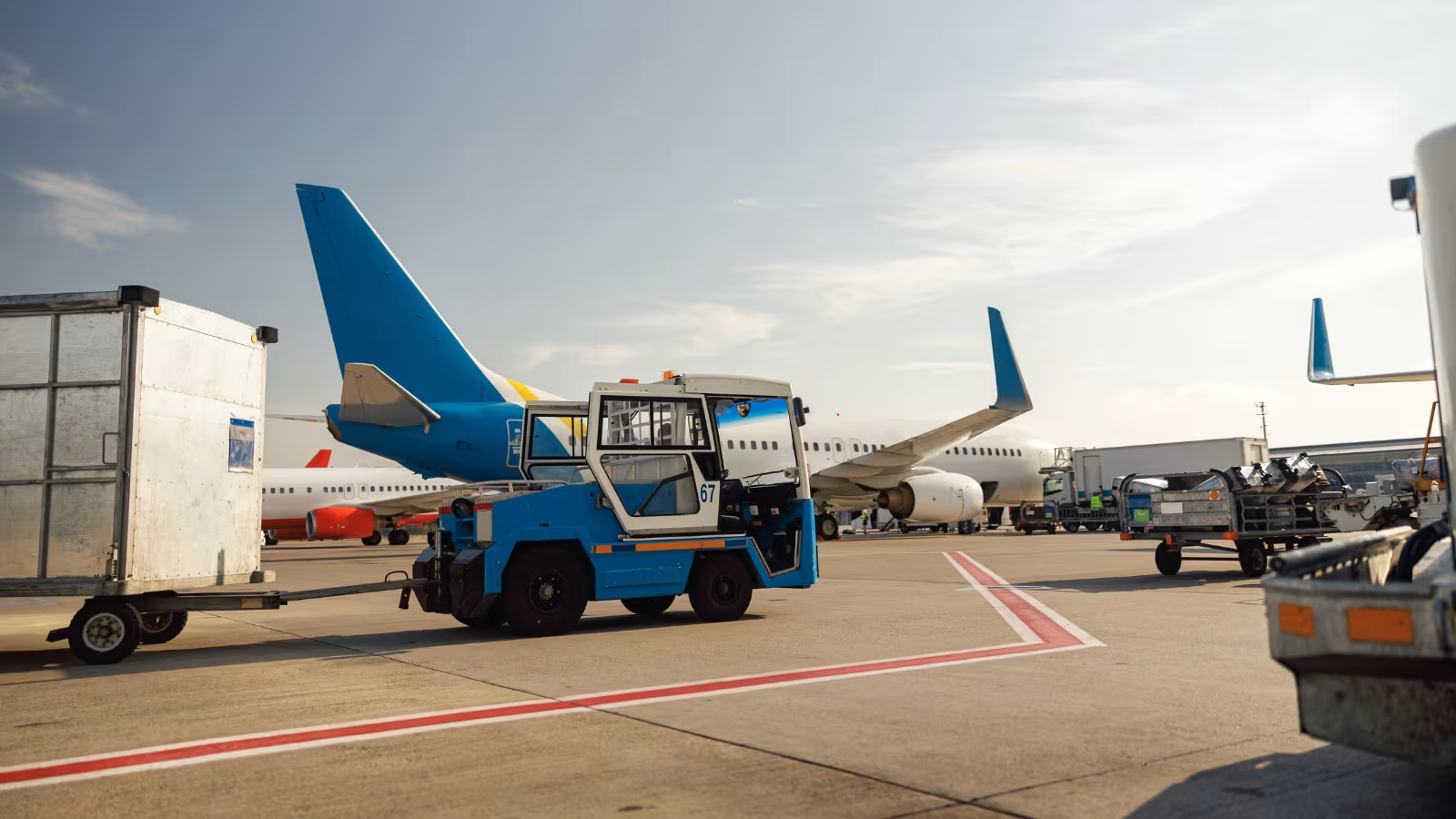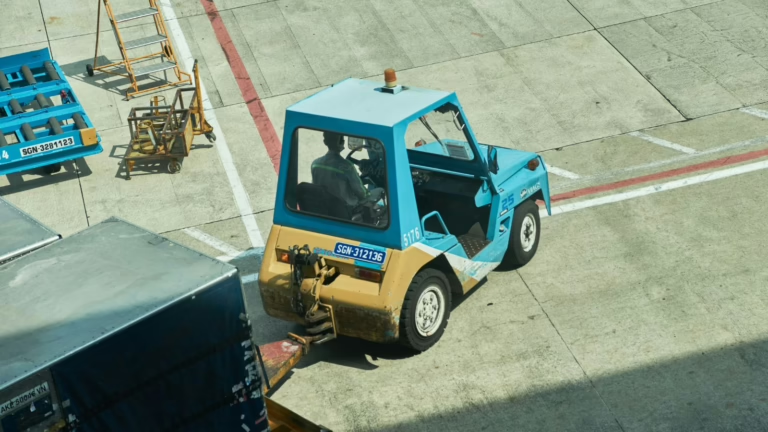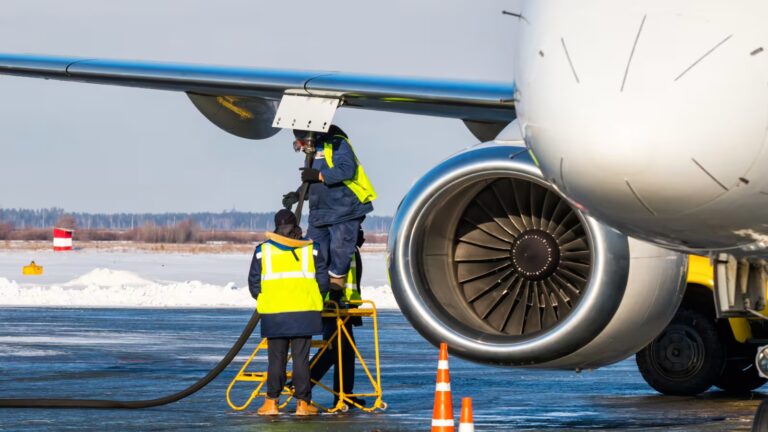The global air cargo industry is undergoing a revolution. With e-commerce booming, demand for perishable goods rising, and supply chains requiring faster turnarounds, airports are turning to automation to keep up.
Automated cargo systems are transforming freight processing, reducing delays, cutting costs, and improving accuracy.
From robotic forklifts to AI-driven sorting, here’s how airports are leveraging automation to streamline cargo operations and meet the demands of modern logistics.
1. Automated Guided Vehicles (AGVs) – The Backbone of Modern Cargo Handling
Automated Guided Vehicles (AGVs) are replacing manual forklifts and conveyor systems in cargo terminals, offering 24/7 operation, precision, and scalability.
- Efficiency & Speed: AGVs like AVILOAD and AVILOADXL can transport Unit Load Devices (ULDs) and pallets at speeds of up to 2 m/sec, significantly reducing aircraft turnaround times.
- Safety & Adaptability: Equipped with obstacle detection and AI navigation, AGVs minimize accidents and can operate in extreme temperatures (-10°C to +45°C).
- Cost Savings: By reducing labor dependency, AGVs lower operational costs—some models have a lifespan of 45,000 hours, ensuring long-term ROI.
2. High-Density Automated Storage & Retrieval Systems (AS/RS)
Warehouse space is a premium in airports, making high-density storage systems critical for optimizing cargo flow.
- Multi-Level Storage: Systems like CIMC’s AS/RS can stack ULDs up to four levels high, maximizing vertical space.
- Cold Chain Compliance: Temperature-controlled AS/RS ensures perishables and pharmaceuticals remain stable during transit.
- AI-Driven Retrieval: AI algorithms predict cargo demand, retrieving shipments 30% faster than manual systems.
3. Smart Conveyor & Sorting Systems
Traditional conveyor belts are being replaced by modular, AI-powered sorting systems that adapt to irregular cargo shapes.
- Celluveyor Technology: Patented robotic conveyor tiles can singulate, sort, and redirect parcels without fixed tracks, ideal for e-commerce’s mixed cargo.
- Automated X-Ray Sorting: AI-driven scanners auto-eject suspicious packages, reducing manual checks by 50%.
- Slave Pallets & Roller Decks: Manually movable pallets with integrated rollers allow flexible cargo movement, reducing bottlenecks.
4. Digital Twins & Real-Time Analytics
Airports are using digital twin simulations to optimize cargo flows before implementing physical systems.
- Predictive Maintenance: Digital twins monitor equipment health, reducing downtime by 20%.
- Flow Optimization: Real-time dashboards (like OPAL ANALYTICS) track KPIs, helping terminals adjust to peak demand.
- Blockchain Integration: Secure, transparent cargo tracking from truck to aircraft, reducing lost shipments.
5. Autonomous Truck Docks & Airside Transfer
Automation extends beyond warehouses—self-adjusting truck docks and robotic airside transfers speed up land-to-air cargo handoffs.
- Movable Truck Docks: Siemens’ automated docks allow simultaneous ULD transfers from multiple trucks, cutting wait times.
- Automated Dolly Docks: Height-adjustable docks with weighing scales ensure seamless ULD transfers between terminals and aircraft.
- AGV-to-Aircraft Loading: Projects like Lödige’s AGVs are testing fully autonomous loading, eliminating manual aircraft handling.
The Future: Fully Automated “Dark Warehouses”?
Some experts predict lights-out cargo terminals—fully automated facilities requiring minimal human intervention. Challenges remain (e.g., high upfront costs, cybersecurity), but the benefits—faster throughput, lower errors, and 24/7 operations—are undeniable.
Key Takeaways
✅ AGVs replace manual labor with faster, safer cargo transport.
✅ AS/RS and smart conveyors maximize storage and sorting efficiency.
✅ Digital twins optimize operations before physical implementation.
✅ Autonomous docks streamline land-to-air cargo transitions.
Conclusion
Automation isn’t just a luxury—it’s a necessity for airports to handle rising e-commerce volumes, perishable goods, and tight delivery windows. The race is on to build the smartest, fastest cargo hubs—who will lead the charge?
Get in touch with Vayu Aviation experts to unfold more.



